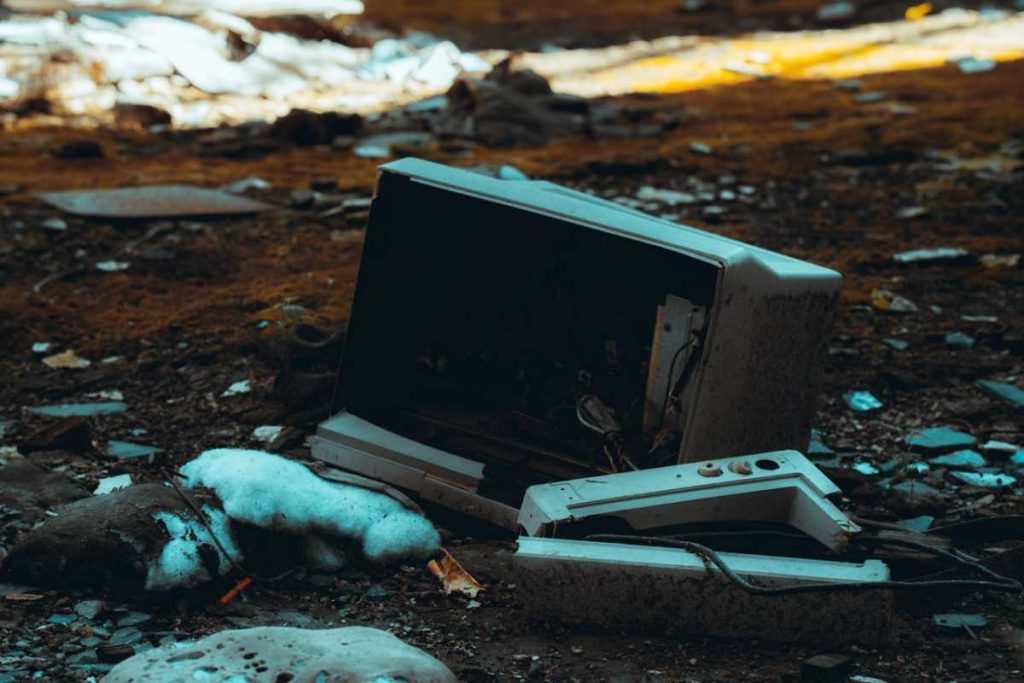You probably expect a neat global figure that tells you exactly how much e-waste IT firms generate each year. The truth is messier. “IT firms” span software companies with lean laptop fleets all the way to hardware makers and cloud providers running thousands of servers. What you can measure is the share of electronic equipment your business buys, how quickly you refresh it, and how much actually leaves your asset register each year. That’s the practical definition of your annual e-waste.
To ground your thinking, start with the big picture. A record 62 million tonnes of e-waste is generated worldwide annually, and forecasts show a rise to more than 80 million tonnes by 2030. Less than a quarter is formally collected and recycled.

Those numbers don’t separate IT firms from everyone else, but they shape the expectations customers and regulators have of your role in the problem. The responsibility to understand and minimize your e-waste output is now embedded into procurement, compliance, and ESG conversations.
What actually counts as IT e-waste?
The e-waste that matters to you is the equipment you remove from service in a given year. That includes laptops, desktops, monitors, phones, networking gear, printers, servers, storage arrays, and power equipment.
If it’s an electrical or electronic device you owned or controlled and you decommissioned it, it belongs in the annual tally. In the EU, this inventory maps cleanly to WEEE product categories, which gives structure to your reporting obligations and give you the documentation you need to dispose of e-waste and report with confidence ethically.
End-of-life vs. “out of circulation”
You may retire a device because it’s broken, obsolete, out of warranty, or simply surplus. From an environmental perspective, the trigger doesn’t matter; what matters is that it leaves active service. Track every disposition—resale, donation, certified recycling, parts harvesting, or destruction—because the pathway determines both your official tonnage and the recovery potential of valuable materials.
The supplier factor
If you buy through vendors with take-back programs, some of your e-waste never touches your dock on the way out. It still originates from your estate, so it still counts in your number; the difference is that documented vendor logistics make your reporting cleaner and often improve your recovery of critical materials.
Cross-border complications
If your offices span countries, your obligations differ. Producer responsibility schemes such as the EU’s WEEE impose specific duties on how equipment is collected and treated, which affects the paperwork you must keep and the downstream recyclers you can choose.
Why the number is growing—even if your headcount isn’t
The annual e-waste you generate is a function of stock size and refresh tempo. Even a stable headcount can result in rising e-waste if refresh cycles shorten or device counts per employee creep upward.
Corporate laptops and desktops typically refresh every three to five years to meet performance, security, and warranty requirements. That cadence creates predictable waves of decommissions. Extending a fraction of your fleet to year four or five can flatten that wave without hurting user experience if you target low-intensity roles first.
Data centers amplify the tonnage
If you operate on-prem or edge facilities, servers and storage become the dominant mass. Traditional refresh policies point to three-to-five-year lifecycles, but many organizations are now safely stretching life to six or even ten years through component upgrades, improved cooling, and better workload alignment. Hyperscalers are publicly lengthening refresh cycles to reduce environmental impact, which directly slows the e-waste churn.
Growth in digital demand adds pressure
Even firms that outsource computing to the cloud indirectly influence e-waste because cloud expansion ultimately results in new physical equipment somewhere. Rising digital demand means more devices entering and leaving service across the entire IT supply chain.
How to estimate your firm’s annual IT e-waste with confidence
You can turn a fuzzy concept into a defensible number by treating e-waste like any other capacity planning problem. The method is simple enough to run from your asset register and decommission logs.
Start with the live estate, not purchases
Create a baseline by counting active devices by category and weight class. Use manufacturer spec sheets or recycler averages to assign a typical mass to each device type. This defines the hardware stock from which your annual e-waste emerges.
Layer in refresh policy and actual decommissions
Apply your standard refresh cycles and warranty expirations to forecast retirements for the coming year. Then reconcile the forecast with real decommission records from the last twelve months—tickets for swaps, DOA returns, break-fix replacements, and project-driven upgrades. Multiplying retired units by their typical mass yields a credible annual tonnage.
Separate tonnage from outcomes
Your headline number is “total e-waste generated,” but you should also track how that mass exits your business: reuse, resale, donation, parts harvesting, and certified recycling. Reporting both gives stakeholders confidence that equipment is managed responsibly—not simply discarded or exported into informal channels.

Where most IT e-waste actually goes
Understanding your downstream flows helps you respond to questions from clients, auditors, and internal leaders.
Although volumes continue to rise, certified recycling lags far behind. Much of the world’s e-waste still ends up in informal recycling economies or landfills. That’s why documentation from certified recyclers and vendor take-back partners matters so much when you claim responsible handling.
Data-bearing assets face tighter controls
Drives and devices with sensitive data may undergo separate destruction or secure wiping workflows. Those choices can reduce material recovery unless you adopt processes that allow recyclers to extract parts after data is irreversibly destroyed. When you model e-waste, segment data-bearing devices so you can track their specific handling.
Compliance shapes outcomes in the EU
If you place equipment on EU markets, producer responsibility rules under WEEE affect both you and your upstream suppliers. Proper registration, traceable take-back, and transparent reporting become essential to maintain compliance and prove ethical processing.
How to shrink your number without hurting productivity
Because your annual e-waste is shaped by stock size and turnover speed, you have levers on both. The goal isn’t to freeze innovation; it’s to get more useful life per kilogram and capture value at end-of-life.
Target roles with modest performance needs and extend device lifecycles by one to two years, supported by mid-life upgrades, battery replacements, and strong endpoint management. In the data center, align workloads to hardware classes and adopt the growing best practice of extending lifecycles where reliability metrics allow.
Design for a circular exit
Standardize models to simplify parts harvesting, buy through vendors with audited take-back, and require recyclers to provide mass-balance certificates. The more you can steer equipment into reuse, remanufacture, or high-yield recovery, the lower your waste intensity per employee becomes.
Report like a pro
Publish both your generated tonnage and the share that was reused, resold, donated, or recycled under recognizable standards. When outcomes are transparent and comparable, you build trust with customers who now evaluate vendors on sustainability as much as functionality.
Conclusion
So, how much e-waste do IT firms generate every year? At a global level, the answer is vast and growing—millions of tonnes with too little of it treated in formal recycling systems. At your firm’s level, the answer is knowable and actionable: it’s the mass of devices you retire each year, which you can calculate from your asset register and decommission history. Turning that into a metric you track means you can demonstrate real progress.
If you manage the question this way, you stop chasing a single elusive global figure and start improving a real operational outcome. You’ll be able to tell your board and your customers not just what your annual IT e-waste is, but how you’re pushing it down year over year while keeping users productive and your infrastructure secure.